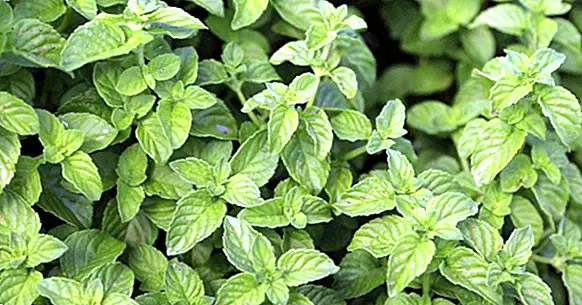Peppermint: 10 properties and health benefits of this plant
Surely the best known properties of the mint are aromatic and gastronomic. However, this plant has a large number of medicinal benefits that have been used for centuries.
In this article you will find several properties of peppermint, as well as some of the main characteristics of this plant .
- Related article: "Poleo mint: its 7 properties and benefits for health"
What is mint?
Peppermint is an aromatic plant of the genus Mentha. In fact, its scientific name is Mentha Spicata, which comes from Latin "spica" and means "spear". It receives this denomination by the shape of its leaves, whose stem reaches 30 cm in height.
In the extract of their leaves they are found different natural chemical compounds that have important effects for our organism . It is a plant of easy cultivation and of European, Asian and African origin that has been used for several centuries, especially for its medicinal properties.
It is also a plant that can easily be acquired and added to the daily diet. Among the nutrients and minerals it contains are found fiber, vitamin A, magnesium, iron and folate .
- Maybe you're interested: "Watermelon: 10 properties and benefits of this summer fruit"
10 properties of peppermint
Due to the multiple properties it has, the mint spicata has received the name of "mint". Among the most popular are its aromatic and gastronomic benefits, however, it also has many medicinal properties. We will see below which are the main ones.
1. Prevention of diabetes
One of the properties that has been recently investigated is menthol activity in the regulation of lipids circulating in the bloodstream . In experiments with rats with induced diabetes, the intake of mint extract reduced cholesterol and triglyceride levels, which may indicate an important property of preventing diabetes.
2. Antioxidant activity
It helps to regulate the process of cellular oxidation, due to the bioactive substances present in the leaves of the mint. This antioxidant action allows to turn prevent inflammation processes and, in a regular shot combined with other healthy lifestyles, it can help prevent chronic degenerative diseases (such as diabetes and cardiovascular).
3. Antispasmodic and analgesic effects
The intake and also the cutaneous use of peppermint oil has properties as a muscle relaxant. Turn this on It allows to cushion painful sensations , issue that is attributed to the action of menthol. For this reason, analgesic properties are recognized.
4. Antibacterial property
Peppermint has shown different modes of action in bacteria and eukaryotic cells, exhibiting different bactericidal properties. This may be due to the presence of phenolic components that act as pro-oxidants, which counteracts the activity of the bacteria. In addition, one of the effects of mint leaves has been Modulate the activity of the immune system , so it has been related to antiparasitic effect.
5. It favors the digestion
Peppermint can be effective in relieving stomach upset and indigestion. The latter are usually caused by the prolonged permanence of food in the stomach, during its passage to the digestive tract.
In this regard, the intake of peppermint oil with meals has been effective in increasing the speed of food passage ; which means that it favors its digestion.
6. Relieve irritable bowel symptoms
Another of the properties related to the previous point is the relief of the characteristic symptoms of irritable bowel syndrome, for example stomach pain and excess gas. Menthol helps relax the muscles of the digestive tract, which helps alleviate some of these symptoms.
7. Relaxing properties
As with other natural infusions, peppermint has important properties as a psychological relaxant. It's like this since it can cause a noticeable reduction of nervous tension after ingesting it in a hot tea. Likewise, menthol oil, used in the ointment form, has relaxing and refreshing properties. For this reason it is used in important muscular tensions, as in the relief of cramps.
8. Relief of burns
Related to the previous point, menthol oil ointment (especially when mixed with other elements such as olive oil) can relieve minor burns. This is also related to its cooling properties .
9. Relieve cold symptoms
It is often thought that mint has a decongesting property.In fact, several of the pharmaceutical treatments that are purchased without a prescription contain menthol, a primary extract of the oil of the mint. However, menthol itself does not have a decongestive action. The relief effect is caused by the refreshing sensation that the mint causes when we inhale it.
10. Invigorating effect
Recently, the inhalation of essential oils of peppermint has been related to brain functions, especially in the short-term retention of information. It has also been proposed that improves alertness and decreases fatigue , so it could be considered an invigorating. However, more studies are needed to make these results conclusive.
Bibliographic references:
- Cristina, S., Pereira, A., Barbalho, S.M., and Landgraf, É. (2017). Properties of mentha piperita: a brief review. World Journal of Pharmaceutical and medical research, 3 (1): 309-313.
- 8 health benefits of mint. (2018). HealthLine Retrieved October 12, 2018. Available at //www.healthline.com/nutrition/mint-benefits.




















